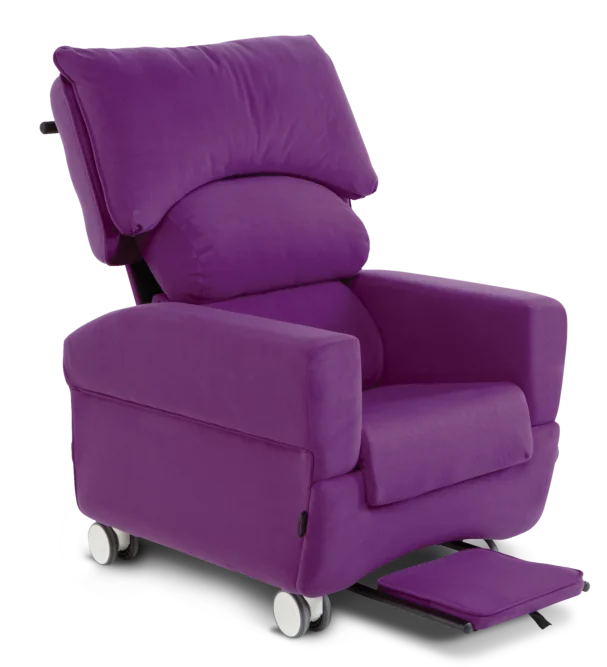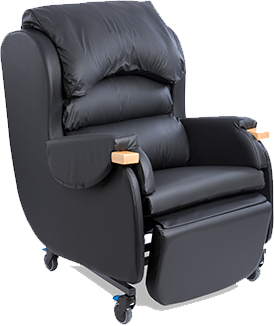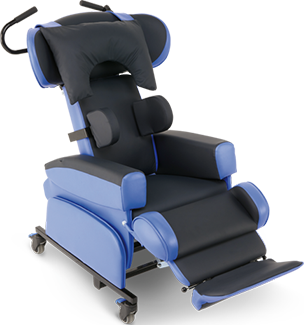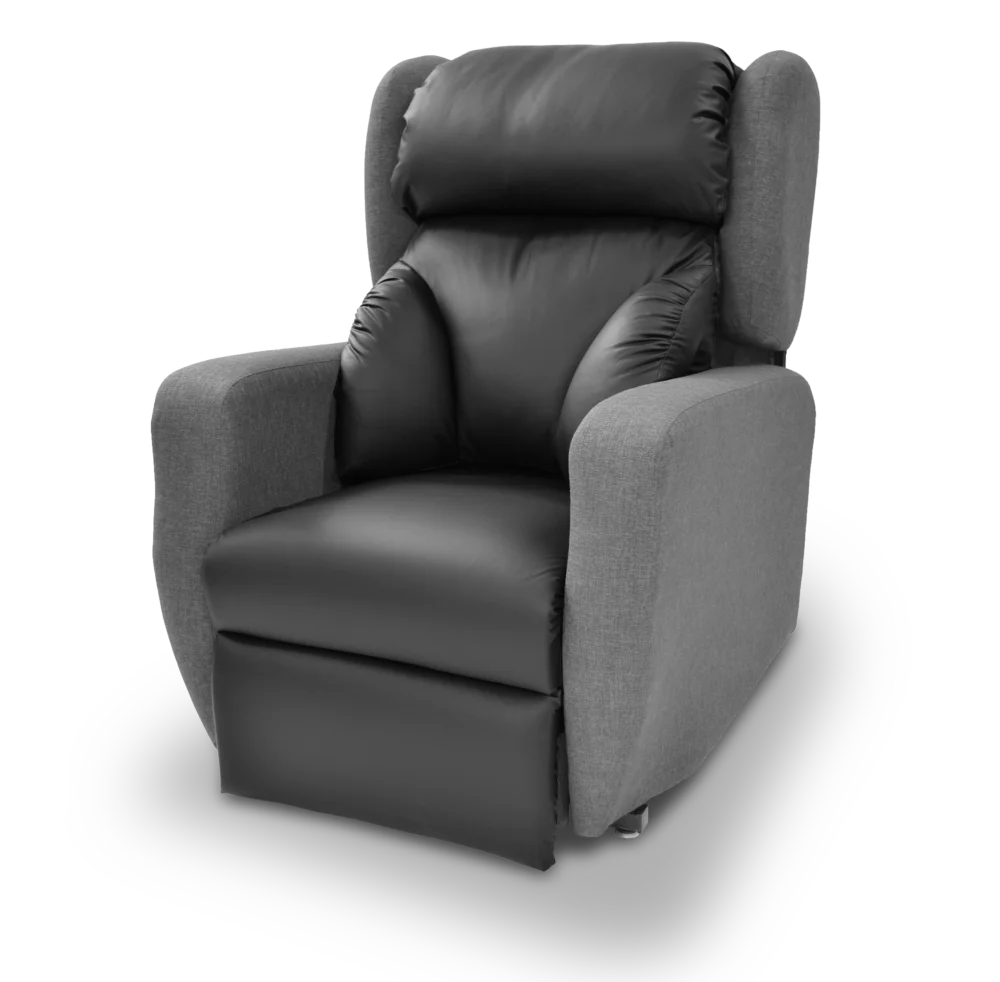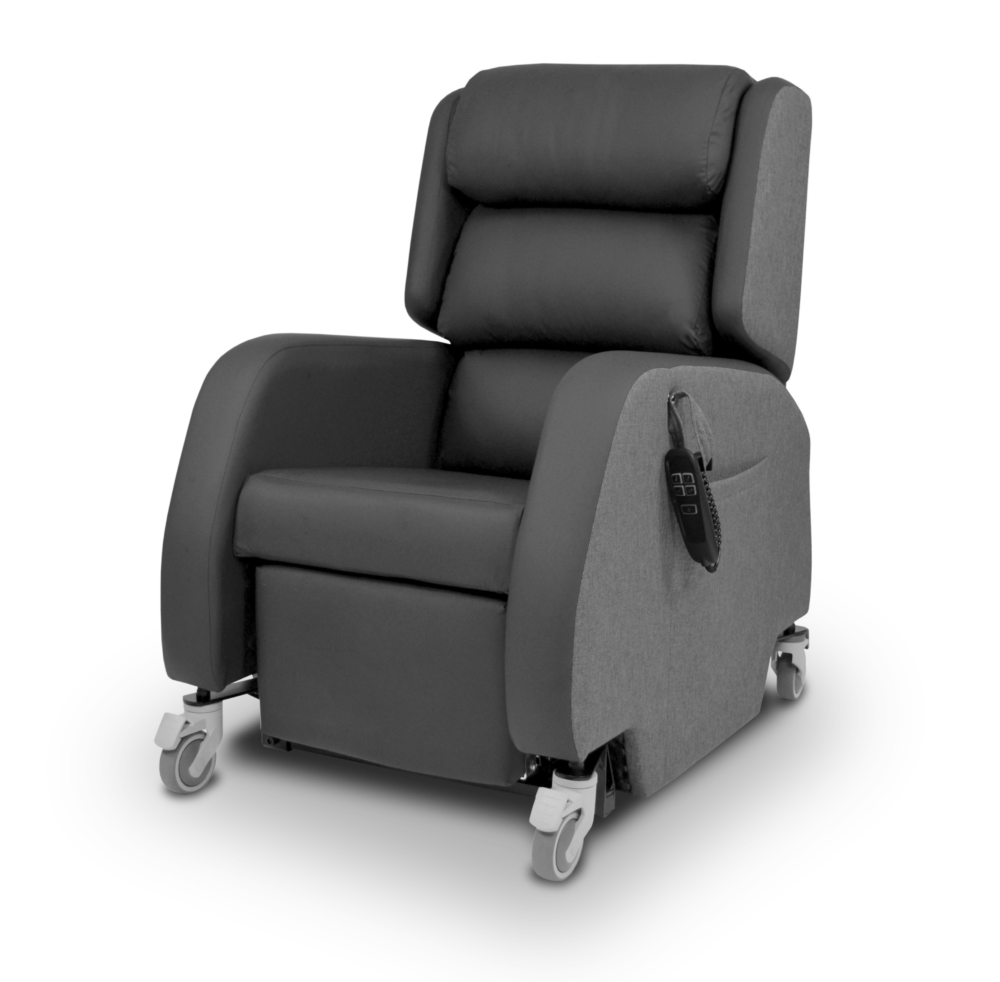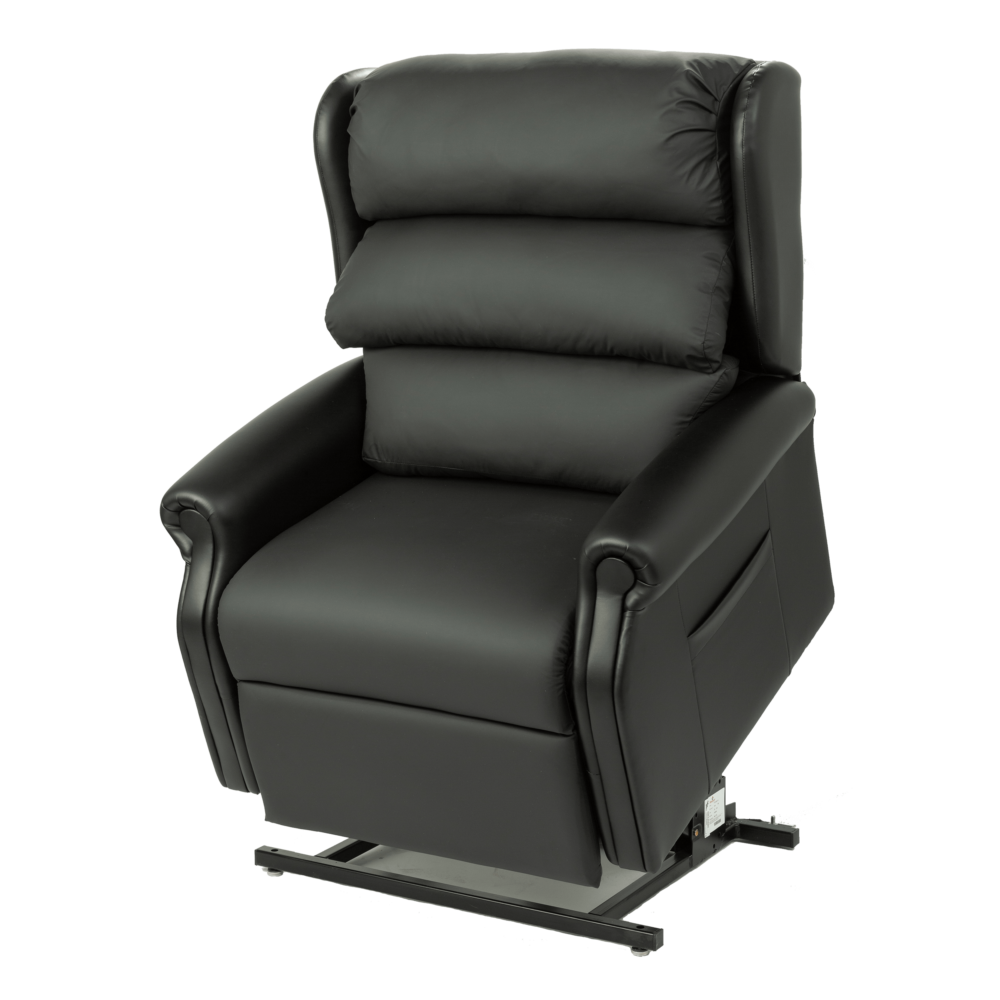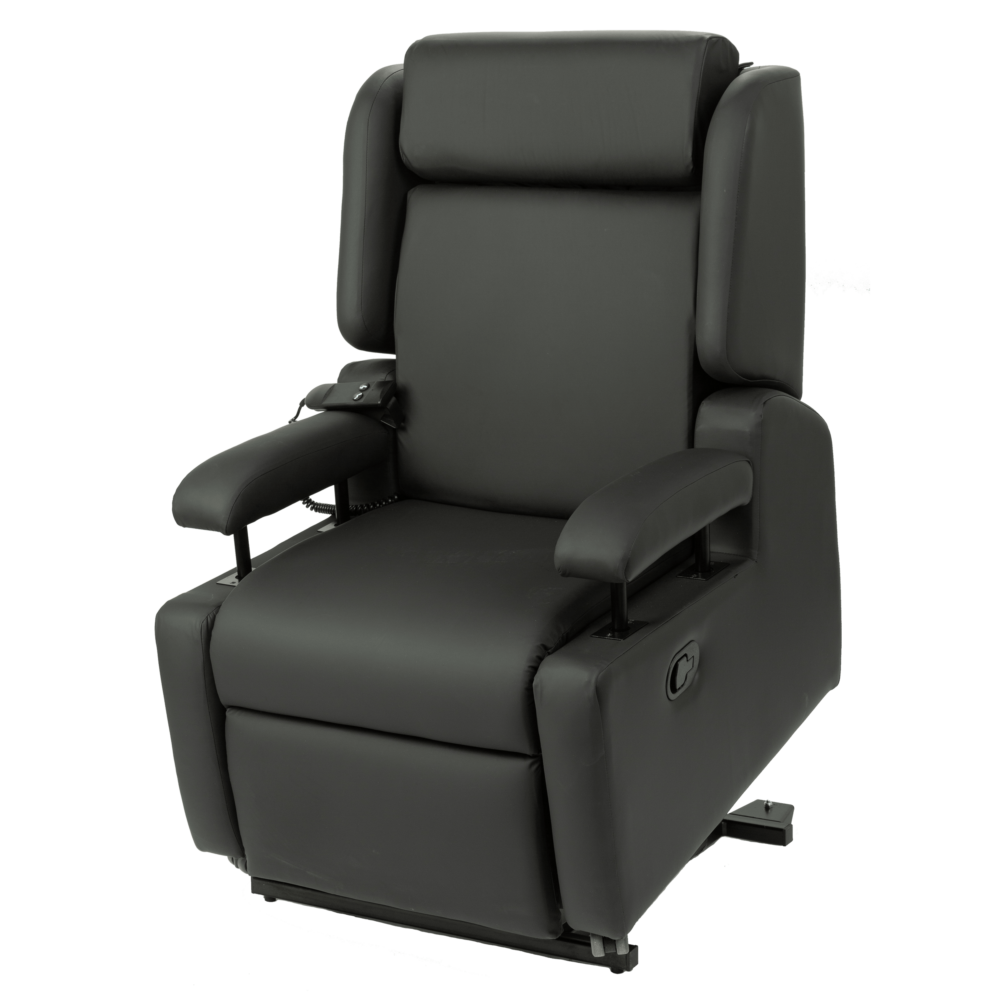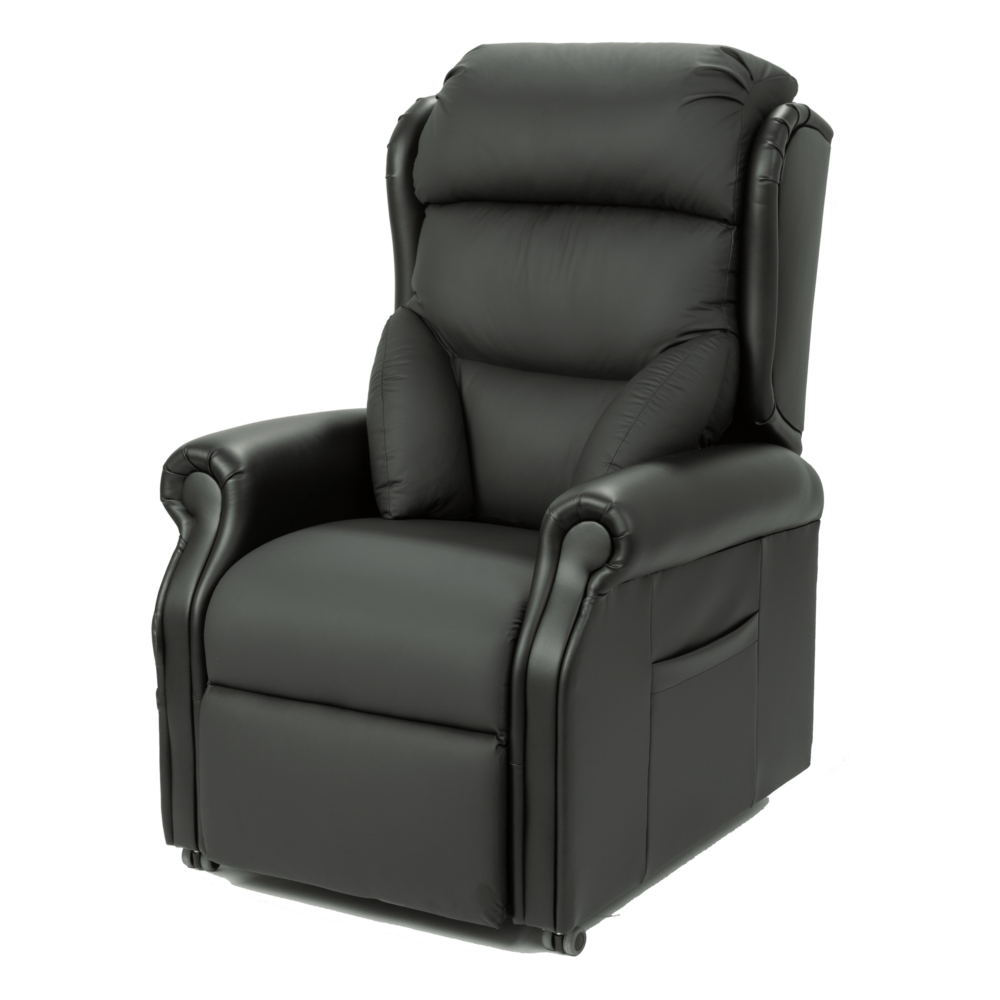Postural Management and Good Sitting Posture –
What’s All the Hype About?
The human body is made up of many different systems that work together to achieve good posture. As we grow and develop we learn from and respond to information that is sent from various sources, including visual, vestibular (sensory) and proprioceptive (movement sensations from muscles and tendons) input. Damage to any of these systems, through injury or disease, can affect our ability to interact with the information and maintain good posture. However, maintaining good posture, at all times, can be difficult for anyone!
What is Posture?
The body structure is complex – it is inherently unstable, multi-segmental and highly flexible, which allows for a wide variety of postures, but also makes it vulnerable to damage. To reduce a very complex structure in to manageable proportions we need to consider it as a system of segments1.
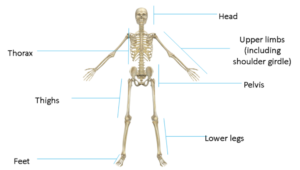
Posture is the way we hold ourselves or position our body segments in relation to one another and their orientation in space. This might be intentional or unintentional. Posture can be influenced by many factors, including our body shape and size, the task at hand, and even the supporting surface on which we are sitting, standing or lying.
Posture has two main purposes2:
- Antigravity – to provide the rigidity necessary to maintain erect posture against gravity
- Interface with the outside world – to orientate body segments to interact with the environment
What is Good Posture2?

What isn’t Good Posture?



What is Postural Management?
If an individual is at risk of postural challenges, potentially due to injury or disease, then a postural management programme should be considered. Postural management is the use of any technique to minimise postural abnormality and enhance function3. It is a multi-disciplinary approach4 that encompasses a person’s daily life across the full 24-hours, respecting all activities and interventions that impact on posture and function. It must be considered on an individual basis5 following a comprehensive assessment.

Failure to protect an individual’s body shape can result in many secondary complications6
Why 24-Hour Postural Management?
Sitting ability and lying ability are inextricably linked. Imagine an elderly lady diagnosed with dementia who instinctively curls up in to a foetal position when she gets in to bed, but lacks the cognitive function to change position throughout the night. Or a young man with cerebral palsy who, due to gravity and neurological involvement, remains restricted in a windswept position, but lacks the physical ability to change position. Prolonged periods of abnormal postures increases the risk of postural deterioration and the associated secondary complications. It is unlikely either individual will be able to achieve a comfortable sitting position during the day after a full night fixed in one asymmetrical position.
It is important to consider the management of posture throughout the full 24-hours, otherwise it will be difficult, if not impossible, to sit out. This will impact on other aspects of daily living and ultimately quality of life.
Why is Good Sitting Posture so Important?
-
Comfort
Wellbeing is paramount! Ensuring comfort, which includes pain management and energy conservation, can ultimately improve quality of life. Proper positioning can promote comfort, increase tolerance of desired position, and decrease fatigue7. Therapeutic seating can be effective in both inhibiting spasticity and in accommodating its sequelae8, which can have a significant impact on pain levels. A recent study by Bartley & Stephens9 suggested that regardless of the clinical benefits, therapeutic seating may not be used if the user is not comfortable.
-
Function
A proper sitting posture, especially one that promotes good postural alignment and stability, is a critical requirement for movement. Use of the upper limbs is vital to successful performance of tasks and participation in activities of daily living10. Freedom of movement in the upper limbs is achieved through effective stabilisation of the pelvis and trunk11. Therapeutic seating and the way in which it is set-up can also reduce the influence of abnormal tone and reflexes12,13 consequently encouraging normal movement.
-
Physiological function
A major goal in postural management is to enhance autonomic nervous system function14. The inability to sit upright may result in decline in health overall, primarily reflecting altered physiological function15. Trunk asymmetry and poor head position can impair:
- Swallow
- Respiration
- Digestion
- Cardiac efficiency
An upright sitting position through the use of therapeutic seating can facilitate a normal swallowing pattern16. Proper seating can also provide an optimum position for respiratory and circulatory function7.
-
Social interaction, engagement and development
It is believed that the introduction of postural management interventions at an appropriate age can facilitate psychosocial and cognitive development. Individuals with learning disabilities benefit from postural interventions; benefits include enhanced cognitive function and communication skills, all precursors to improved learning and participation3. An upright sitting position can offer a better line of vision for interaction and provide an increased ability to achieve cognitive tasks16, and improved head control is essential for orientation and socialisation. A stable posture can help an individual participate more fully in social activities at home, school or work, and as part of the community17.
Each outcome, whether viewed collectively or individually, has the potential to significantly influence quality of life15.
What are the Consequences of Poor Posture,8,18-22?
Secondary complications:
- Pain and discomfort
- Contractures and deformities
- Poor physiological function
- Deterioration in health
- Reduced function and independence
- Social isolation and limited opportunity for participation
- Reduced quality of life
- Death
We want to ensure that everyone is able to achieve the best position for comfort, freedom of movement, independence, and interaction. Ultimately, we want to enable a happy and healthy life.
This is where CareFlex therapeutic seating can help! To learn more, get in touch or book on to one of our CPD training events.
Rebecca Dunstall
BSc Physiotherapist (Hons)
CareFlex Clinical Specialist
rebecca.dunstall@careflex.co.uk
References:
- Pope PM (2002) Posture management and special seating In Edwards S (Ed) Neurological Physiotherapy London: Churchill Livingstone
- Pope PM (2007) Severe and Complex Neurological Disabilities: Management of the Physical Condition London: Butterworth-Heinmann
- Farley R, Clark J, Davidson C, Evans G, MacLennan K, Michael S, Morrow M, Thorpe S (2003) What is the evidence for the effectiveness of postural management? International Journal of Therapy and Rehabilitation 10(10):449-455
- Ham R, Aldersea P, Porter D (1998) Wheelchair Users and Postural Seating A Clinical Approach London: Churchill Livingstone
- Pain H, McLellan L, Gore S (2003) Choosing Assistive Devices A Guide for Users and Professionals London and Philadelphia: Jessica Kingsley Publishers
- Postural Care Action Group (2011) Postural care: protecting and restoring body shape Available from: www.preparingforadulthood.org.uk/media/293084/postural_care_booklet.pdf
- Cook AM, Hussey SM (2002) Assistive Technologies Principles and Practice St Louis: Mosby
- Herman JH, Lange ML (1999) Seating and positioning to manage spasticity after brain injury Neurorehabilitation 12(2):105-117
- Bartley C, Stephens M (2017) Evaluating the impact of WaterCell® Technology on pressure redistribution and comfort/discomfort of adults with limited mobility Journal of Tissue Viability 26(2):144-149
- McClenaghan BA, Thombs L, Milner M (1992) Effects of seat-surface inclination on postural stability and function of the upper extremities of children with cerebral palsy Developmental Medicine and Child Neurology 34:40-48
- Green EM, Nelham RL (1991) Development of sitting ability, assessment of children with a motor handicap and prescription of appropriate seating systems Prosthetics and Orthotics International 15:203-216
- Nwaobi OM, Brubaker CE, Cusick B, Sussman MD (1983) Electromyographic investigation of extensor activity in cerebral-palsied children in different seating positions Developmental Medicine and Child Neurology 25:175-183
- Bergen A, Presperin J, Tallman T (1990) Positioning for Function: The Wheelchair and Other Assistive Technologies New York: Valhalla Rehabilitation Publications
- Jones M, Gray S (2005) Assistive technology: positioning and mobility In SK Effgen (Ed) Meeting the Physical Therapy Needs of Children Philadelphia: FA
- Healy A, Ramsey C, Sexsmith E (1997) Postural support systems: their fabrication and functional use Developmental Medicine and Children Neurology 39:706-710
- Pountney TE, Mulcahy CM, Clarke SM, Green EM (2000) The Chailey Approach to Postural Management Birmingham: Active Design Ltd.
- Trefler E, Taylor SJ (1991) Prescription and positioning: evaluating the physically disabled individual for wheelchair seating Prosthetics and Orthotics International 15(3):217-224
- Cutter NC, Blake DJ (1997) Wheelchairs and seating systems: clinical applications Physical Medicine and Rehabilitation 11(1):107-32
- Langemo DK, Melland H, Hanson D, Olson B, Hunter S (2000) The lived experience of having a pressure ulcer: a qualitative analysis Advances in Skin and Wound Care 13(5):225-35
- Turner C (2001) Posture and seating for wheelchair users: an introduction British Journal of Therapy and Rehabilitation 8(1):24-8
- Gilinsky G, Smith C (2006) New wheelchair or new solutions? Rehab Management [serial online] Available from: http://www.rehabpub.com/features/1022006/3.asp [Accessed 30th August 2016]
- McClinton DH (2007) Seating and positioning systems provide pediatric patients with clinical, environmental benefits Care Management 13(2):23-7

